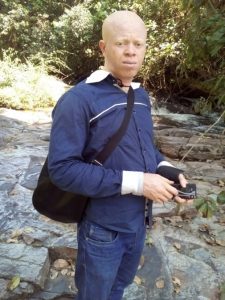By Patrick Farrar
UF Biology is highlighting the work and lives of several international graduate students in the department. These students face unique challenges and pressure from all sides, but have demonstrated endless fortitude and warrant special appreciation.
Izuchukwu Ezukanma
Izu is an avid defender of bryophytes, a group of plants containing mosses and two lesser-known types, liverworts and hornworts. His warmth, curiosity, and knowledge about them made a compelling case for learning more about these unique organisms.

He explained how botanists and plant scientists generally shy away from studying this group. Existing on the brink between algae and other ‘higher plants’, they are hard to classify and differentiate, and there is generally less information available about them compared to other groups.
“Once you begin to study them, you come to like them. You may not appreciate them, but once you view them under the microscope, they’re wonderful,” he said.
Izu grew up in eastern Nigeria, completing his Master’s in his home country studying bryophytes. He attended university in Ibadan, the largest city in west Africa; around there, so much forest was cleared for development that the biggest areas of tree cover were agricultural areas with tree crops.
Bryophytes used the tree crops as a substitute for their normal forest habitat. Izu studied the diversity in these bryophytes and examined the amount and types of pollutants they picked up.
Here’s the thing about bryophytes: they don’t have cuticles like other plants do, a waxy film that keeps out contaminants. Naturally, bryophytes gather up pollutants more easily than other plants, giving them a unique function as a “biomonitor”.
In other words, they serve as the canary in the coal mine for an ecosystem’s pollution level. If researchers see that bryophytes in a region have picked up a lot of pollutants, they know that levels are high and can try to intervene.
After completing his Master’s, Izu pioneered the collection of bryophytes in Gashaka-Gumti National Park, Nigeria’s largest protected area.
He explained some other interesting features of bryophytes. They lack true roots, so they absorb most of the water and nutrients they need directly from the air (along with those nasty pollutants).
Their genes are also unique in the plant world. They only have one copy of their chromosomes during the main part of their life cycle, while other plants have two copies. This makes it easier to test what bryophyte genes do. By preventing a gene from being expressed, or stopping the genetic code from being turned into a product, one can observe how this changes the offspring and thus what the gene is responsible for.
Bryophyte genes may hold the key to making crops more resilient to droughts and dry conditions. One of Izu’s long-term goals is to understand the genes that allow bryophytes to adapt to harsh environments and transplant them to common crop plants in northern Nigeria, where there have been severe crop failures.
“If you have the patience, they will tell you so many stories,” he said.

Izu came to UF to work with Dr. Stuart McDaniel in the UF Biology Department to continue studying bryophytes for his Ph.D., but in a totally new region: the far northern latitudes. Amazingly, while most plants become less abundant and less diverse at higher latitudes, bryophytes become more so, becoming the dominant form of vegetation in these areas.
At study sites in Alaska and Greenland, Izu and his research partners are looking at how bryophytes cope with climate change and obtain nutrients.
According to NASA, the Greenland ice sheet set a new record last year, losing 532 billion tons of ice in 2019 alone.
“That’s the reason we’re going to Greenland,” he said. “As the ice retreats, rock surfaces that were under ice cover will now be exposed, and bryophytes are the first group of organisms that can colonize that hostile environment.”
As bryophytes establish themselves on newly uncovered rock, other plants will be able to follow. As white reflective ice is replaced by darker surfaces like rocks and plants that absorb more heat, global warming will intensify and even more ice will melt.
Izu and his team want to observe how bryophytes are responding to the ice melting and share their findings with other scientists. This would improve models that try to predict how fast Greenland is greening, how warm the Arctic will get, how much ice will melt, and how much sea levels will rise.
Outside of his studies, Izu is active in the Episcopal Church and the gym. He looks forward to participating in church in person again.
“But we find a way to connect and be a part of a community,” he said.